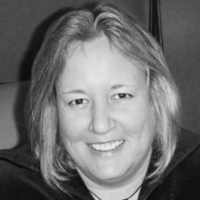This text based course is a transcript of the live webinar titled, "EADLs: Enabling Access to Environments and Activities Across the Lifespan", presented by Kim Furphy, DHSc, OT, ATP.
Environmental Activities of Daily Living (EADLs)
When we talk about environmental activities of daily living, these provide a method for people who have any kind of functional limitations to control devices in their environment. Environmental activities of daily living were once known as environmental control units, or ECU. It is just easier for me to say that rather than EADL unit. One of the reasons I think they changed this term was to try to get some funding for these devices through insurance companies. If you see activities of daily living, that is clearly an OT term and it implies that there should be some kind of reimbursement for allowing people to be a little bit more independent in their environment. As we become more dependent on technology, it might be that we see insurance companies paying for more of these devices, and we will talk about that a little bit later.
The goal when we look at EADL use or ECU use is to improve the individual’s independence and self-care, work, play and leisure activities. As OTs that is what we are clearly looking to do. These are meant to help supplement people in order to be able to do that.
Common Appliances
What are some of the common appliances that you can control with EADL units or ECUs? Obviously TVs, VCRs, DVD players, and all those other things that are out there you related to the TV can be controlled with one of these devices. They can also control stereos, phones, and lights. Some people may know that you can have electronic drapes or that you can run bed controls through the EADL units as well as doors. The doors that we see when we walk into a grocery store, you know the sensor pads outside, those are really considered environmental control units, because they are allowing someone to have control. Now of course they certainly help people who have mobility deficits, but they also help us as we walk into the grocery store with kids, bags, carts, and everything else. It allows us to be more independent in that environment. If you kind of think of it along those lines, anything that you see that makes it easier for anyone to function is really kind of an environmental control unit.
Common Settings
Primarily we are going to see them in people's homes. When you get into work and school settings, the hope is that those settings have been modified at least somewhat for people who have any sort of functional deficits; however, the most common setting that were going to see these are in the home.
Two Types
There are really two types of environmental control units. We have computer-based units that basically are software programs and these allow environmental control through the computer. There are some iPad or iPhone apps or other tablet apps that you can have environmental control through and I am going to also place them as computer-based, even though technically they are not traditional computers.
Then we also have freestanding units. These are units that are not connected to a computer, but they allow environmental control. Their sole purpose, for the most part, is for environmental control. Now we will talk a little later, but there are augmentative communication devices that do allow both computer access and as well as allow for environmental control. Those are kind of specialty type of environmental control unit, because it allows both. They kind of fit into, for me, more the freestanding type of units that are out there.
